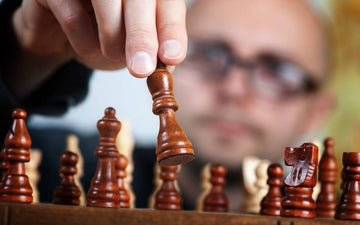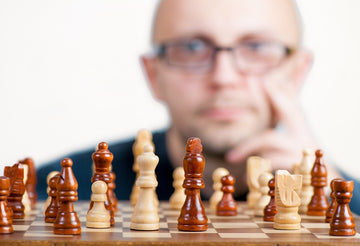
Chess Visualization is the ability to predict your opponents next set of moves. It is the most crucial ability among the greatest chess players. Successful players are often able to visualize chess moves 10 to 20 moves ahead.
When playing chess with an opponent of a similar rating, it is fair to assume that both players are aware of similar strategies and tactics. The only difference occurs when one player is able to think ahead of the other. As a result, a difference results in either material advantage or time. This forces the game to edge towards the end. If neither player is able to beat the foresight of the other, a draw would result.
Before learning about visualization and methods to improve it, we should learn about the different notations involved in the game of chess. The standard chess notation followed and accepted around the world is the Algebraic Chess Notation. FIDE considers The Algebraic Chess Notation as the standard notation. That is the International Chess Federation that regulates all recognized chess competitions around the world.
So if you wish to understand, speak and think in the original language of chess, check out our article on a list of important Chess Notations below:
Now that we have got that out of our way, lets look at some techniques that you can use to improve your visualization.
Step1: Pick up a tactic and try to solve it without moving any piece
This is the first step in mastering the art of visualization and perhaps one that is very common among players of all ratings. If the player is well-versed with their theory, solutions to these tactics will be obvious. The key here is to successfully make the right moves without moving the pieces on the board. To add some difficulty to this, a time limit of 5 minutes may be arbitrarily set. This time limit can reduce further on sufficient practice. It is very important to increase the level of tactics and exercises everyday. This will lead to progression and gradual advancement of visualization techniques.
Step 2: Try to solve the same tactic on an empty chess board
Remove all the pieces from the chess board. Now, try to remember the placement of each piece on the board. Use the dark and light squares to create a sort of pattern to place the chess pieces. Once you do this, solve the same tactic in the same time limit. Only this time it should be done without any chess pieces on the board. It may seem difficult at first, but only after some practice, the results will speak for themselves.
Step 3: Cover your eyes with something and solve the tactic
Get a sleeping mask or a thick cloth to cover your eyes. Once you have done that, practice the same tactic in your head without using the chess board as a reference albeit an empty one. This is the final step in the process to improve visualization and definitely the most difficult out of all. It helps to recite the solution out loud. It may seem impossible to do at first, but dont give up and keep trying. The results will soon bear fruit.
Practising at least 10 tactics using these steps everyday will significantly go a long way in improving your game. You should keep increasing the difficulty of these tactics at your own pace to find desirable results.
Below is an embedded video of FIDE Master (FM) Viktor Neustroev explaining these steps in much more detail:

This website below is also a great tool in improving Chess visualization:
https://chessvis.herokuapp.com/
For more details, visit:
https://www.chess.com/blog/Gertsog/how-to-improve-chess-visualization




